- Kia ora
- The nationally vulnerable banded dotterel’s thriving
- Bridge 8 construction underway
- What’s the hold up!
- Remote traffic management being trialled in Ōtaki
- Construction update
 Kia ora
Kia ora
Happy New Year from all of us at the PP2Ō project. I hope you all had a great holiday break.
It’s February already and PP2O’s work programme for 2020 is well underway. Bridges are a major focus for the project this month and we expect to complete five bridges this year – Ōtaki River Bridge (Bridge 5), School Road Bridge (Bridge 8), Waitohu Stream Bridge (Bridge 1), the rail overbridge at Marycrest (Bridge 9) and the Makahuri underpass at Marycrest (Bridge 10).
A major milestone for the project is the School Road Bridge (Bridge 8) at Te Horo. The first of the beams is scheduled to be positioned on March 1. The placement of the beams is an exacting process which will require a full closure of SH1 to ensure road users’ safety. This work is being carried overnight to keep delays to motorists to a minimum.
Another focus this month is getting traffic switched onto the Local Arterial Road (LAR) at Marycrest. The switch was planned to take place before Christmas. However, we delayed the switch to allow time to carry out more testing on the pavement to ensure it was ready to carry traffic and not disrupt holiday period traffic.
So, as you can see, it’s a busy time on the project and your safety and that of our workers remains a high priority. Traffic management is an essential part of this and the team has put together a video (see below) to explain why various traffic management methods are used.
If you need any further information on the PP2Ō Expressway project, please call us on 0800 PP2O INFO or email pp2o@nzta.govt.nz
Ngā mihi
Andy Goldie, Project Manager
The nationally vulnerable banded dotterel’s thriving
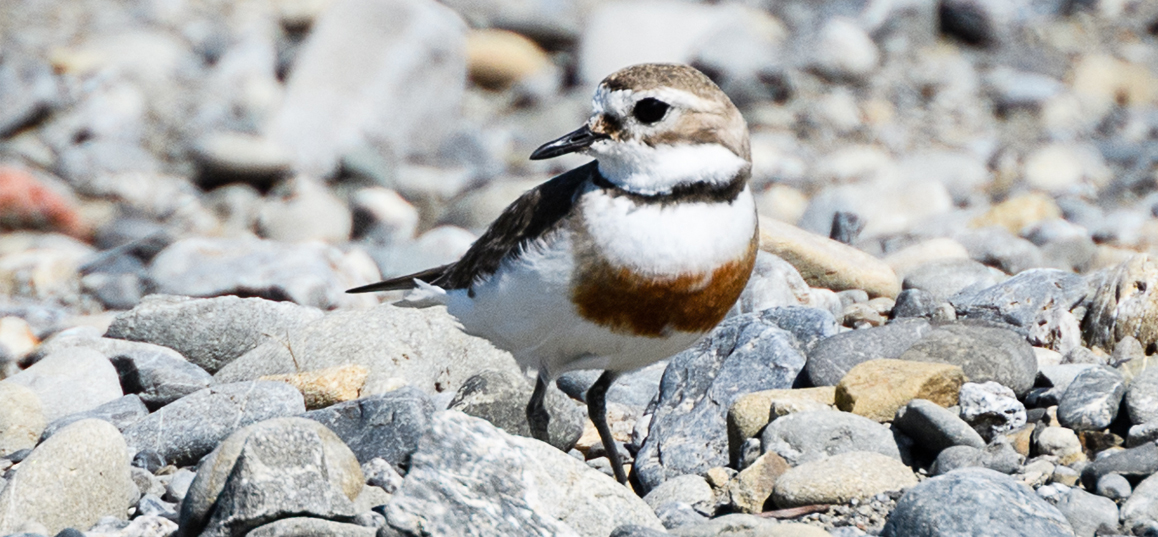
Banded Dotterels are perfectly adapted to their environment.
With the Ōtaki River a known habitat for the nationally vulnerable Banded Dotterel, ensuring the construction of the PP2Ō river bridge caused no harm or significant impact to the birds has been the top priority for Fletcher while working in the river corridor.
As part of this, Fletcher’s Project Ecologist undertook regular surveys – including prior to any works starting – to ensure there were no nesting pairs within close proximity of the works site. If a nesting pair or nest is found, work is stopped in the area until the eggs hatch and the chicks fledge.
While no nesting Banded Dotterels were found within the works site this year, some were spotted just upstream. A number of nests were seen by our ecologist (and keen staff members), who kept a watching eye on them. They followed progress in one nest from eggs to new born chicks to fledglings. All in all, it was a successful breeding season for the birds.
Banded Dotterel are extremly hard to spot with their small stature and ability to blend into the rocky river beds. They also lay their eggs in nests on the ground which are hardly more than a small depression between river rocks. This makes them extremly prone to being runover, stepped on or preyed upon and makes it all that bit more special for the Project to be able to observe a successful nest so close to our bustling work site.
Bridge 8 construction underway
The construction of Bridge 8 at Te Horo is underway and when finished, it will carry the realigned School Road over the existing State Highway 1 (SH1), the North Island Main Trunk Railway (NIMT) and the new Expressway.
The bridge provides a link between Te Horo Township at Te Horo Beach Road and the areas to the east of Te Horo along the realigned School Road. It will carry one lane of traffic in each direction along with a shared path.
The bridge comprises a two span steel-concrete composite bridge deck - each span is 41.6m in length – sitting on Mechanically Stabilised Earth walls at each abutment and a central pier.
The first of the steel beams for Bridge 8 is due to be installed on March 1. The work requires an amount of precision to ensure the huge beams are placed correctly. The beams are lifted onto the bridge structure in coupled pairs. Because of the size of the beams which have to be carried over SH1, for safety reasons, we have to stop traffic both ways while each beam placement is undertaken.
To prevent disruption to road users, the work will be undertaken at night, between midnight and 3am and stop/stop traffic management will be in place. Light vehicles will have the option of a detour if they don’t fancy the 30 minute wait, but heavy traffic will be required to stop for the duration of the closure.
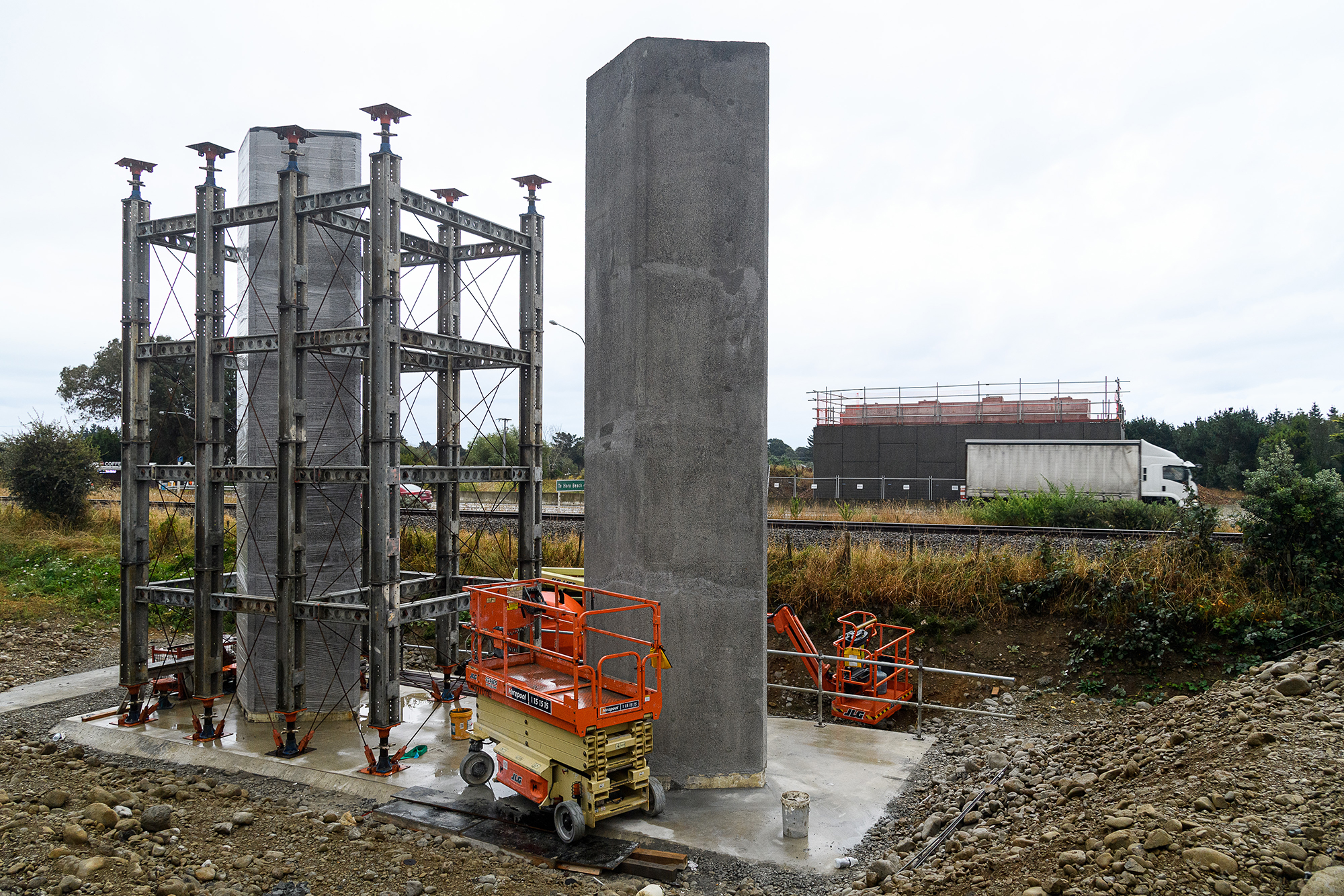
West side of Bridge 8’s central pier, looking towards State Highway 1.
What’s the hold up!
You can’t see anything happening ahead, yet that traffic management truck up front is going so slow, and the traffic is building up as far as you can see behind. But, just because you can’t see anything, doesn’t mean there is not some danger ahead. In fact, you can rest assured if a ‘mobile operation’ is in place, there is a lot happening and most of it is directed at keeping road users safe.
Mobile operations are used for many reasons. For example, picking hazardous items off roadways and laying out traffic management cones to guide people through hazardous areas.
Remote traffic management being trialled in Ōtaki
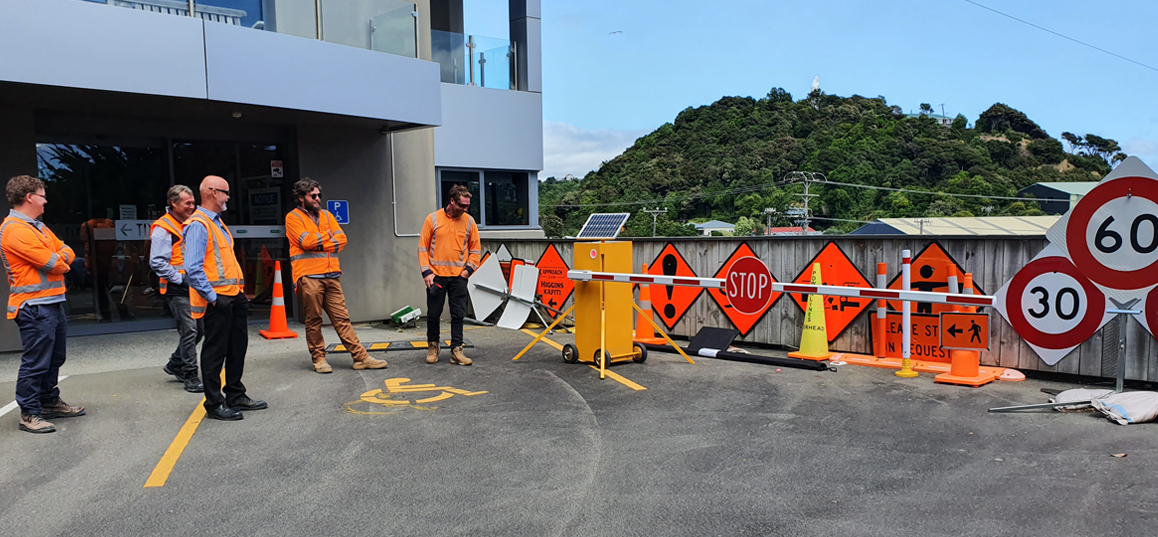
Traffic Management Supervisor Travis Medhurst (right) demonstrates the Optiboom traffic management system to his staff.
Introducing innovative technology and safer traffic solutions to an ever-changing terrain around the PP2Ō expressway project, is what Higgins Traffic Management Supervisor Travis Medhurst enjoys most about his job.
The latest nifty little gadget to make its appearance beside the Peka Peka to Ōtaki expressway is, what Travis calls, the Optiboom. “It’s a practical stop-start solution that eliminates the need for two traffic controllers with paddles concurrently managing passing motorists and standing on the side of the road all day”, Travis says.
This portable bright yellow barrier gives half of the traffic team the opportunity to be employed elsewhere which optimises staff productivity while increasing traffic flow. The double-sided red/green arm signals, also allow frequent traffic control changes based on road conditions, and therefore, greatly improves overall site productivity.
Powered by solar energy, the Optiboom is not only extremely energy efficient, but an environmentally friendly addition that allows for long lasting outdoor use.
It’s Travis and his team’s hope that motorists and site workers will adopt this little robot after the trial period and enjoy the efficiency it brings to traffic flow.
Construction update
North Zone (Taylors Road to Ōtaki River Bridge)
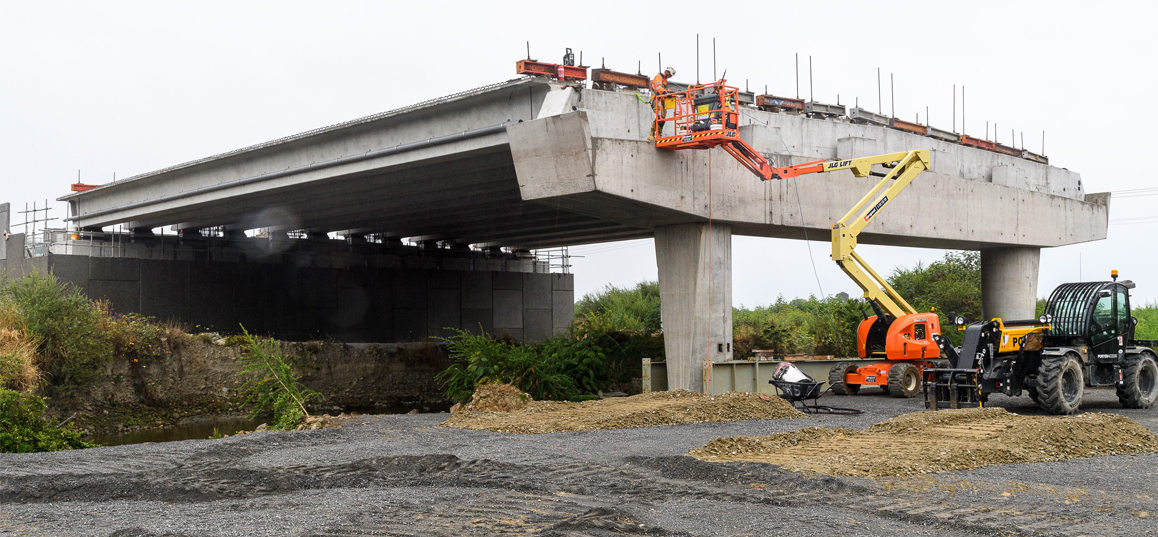
Beams being lifted onto Bridge 1 by Taylors Road.
Work is continuing on Bridge 1 (Waitohu Stream Bridge) by Taylors Road and by the end of March 2020, we expect to have all the beams placed, Bridge 1 stretches over the Waitohu Stream.
Culvert 2b, just North of Waitohu Stream is also on target to be completed by the early April 2020. This 11-barrell culvert is designed to take the flood over-flow from Waitohu Stream.
And down beneath the new Ōtaki River Bridge (Bridge 5), Winstone Accommodation Works is on track to be completed by early June 2020. These tracks give access to the Winstone Quarry and beyond.
South Zone (Ōtaki Gorge Road to Marycrest (eastern side of railway))
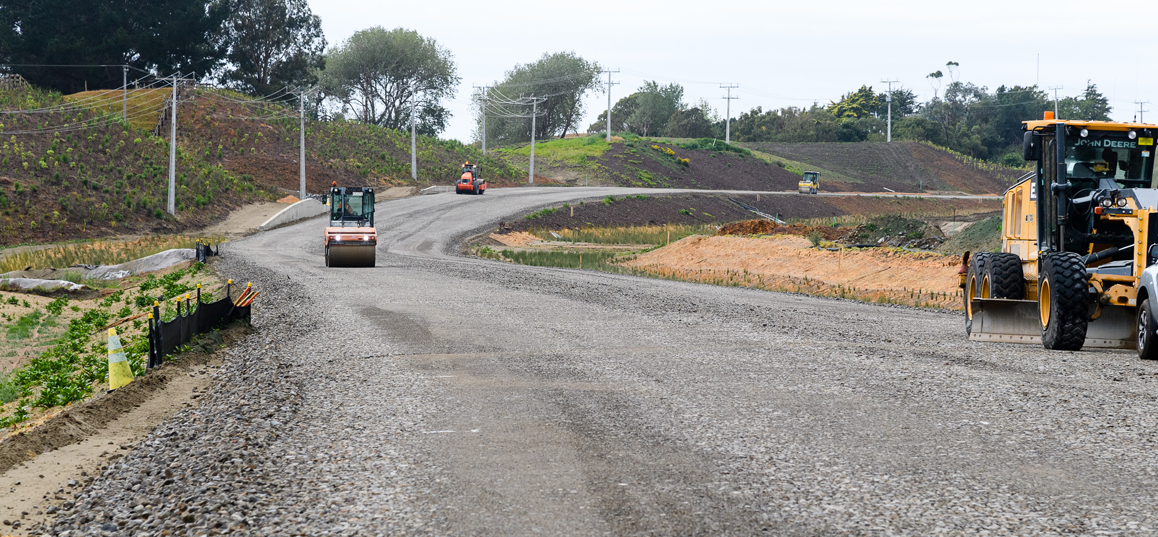
Work is progressing well on the new local arterial road at Te Horo.
Road users are expected to have new routes to travel this year. By early March, traffic will be using stage 1 of the new Gear Road and by June, motorists will also be on stage 1 of the new School Road. Switching the traffic allows us to get on with building the Expressway.
Bridge 7 at Ōtaki Gorge Road is also expected to be open to traffic by the end of April. And of course Bridge 8 will also be making progress with all the beams lifted into place by mid-March.
In the Marycrest to Te Kowhai Road area, traffic will finally be moved onto the new Local Arterial Road. Stage 1 (northern end) will be opened in March and stage 2 in mid-May. Bridge 10, the Makahuri underpass at Te Horo, will be completed in June and we will then be developing the art work, in conjunction with Te Horo School, which will grace its interior.